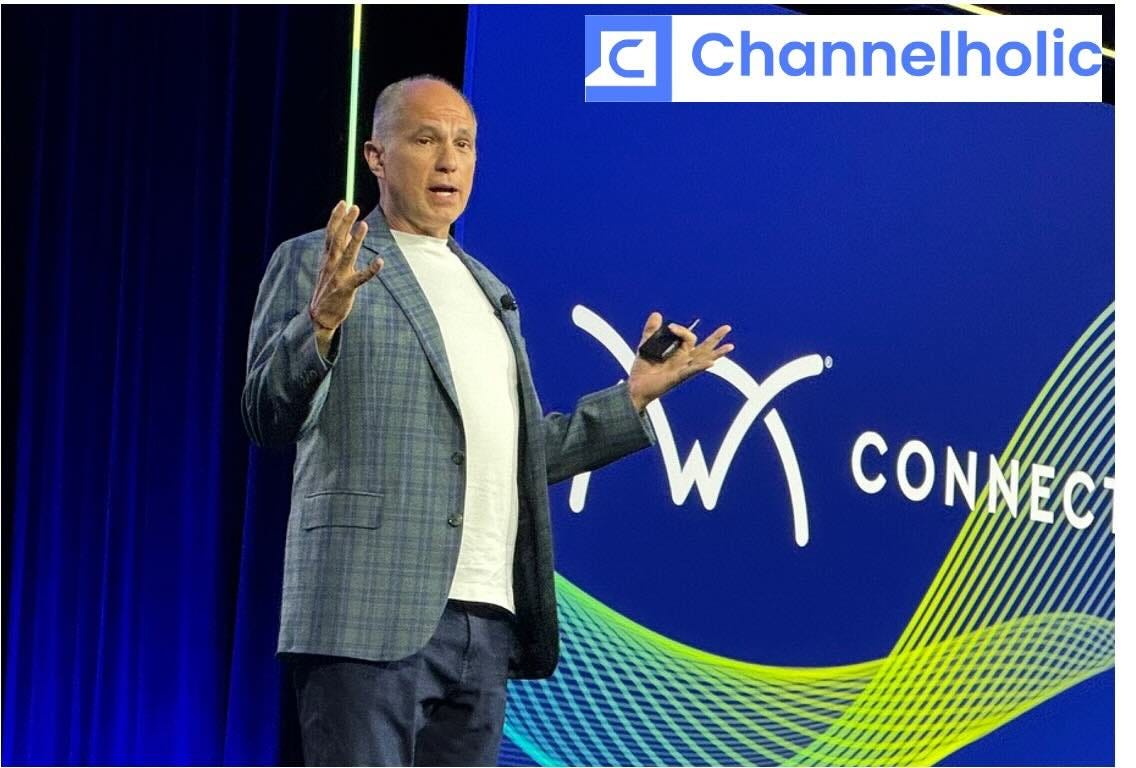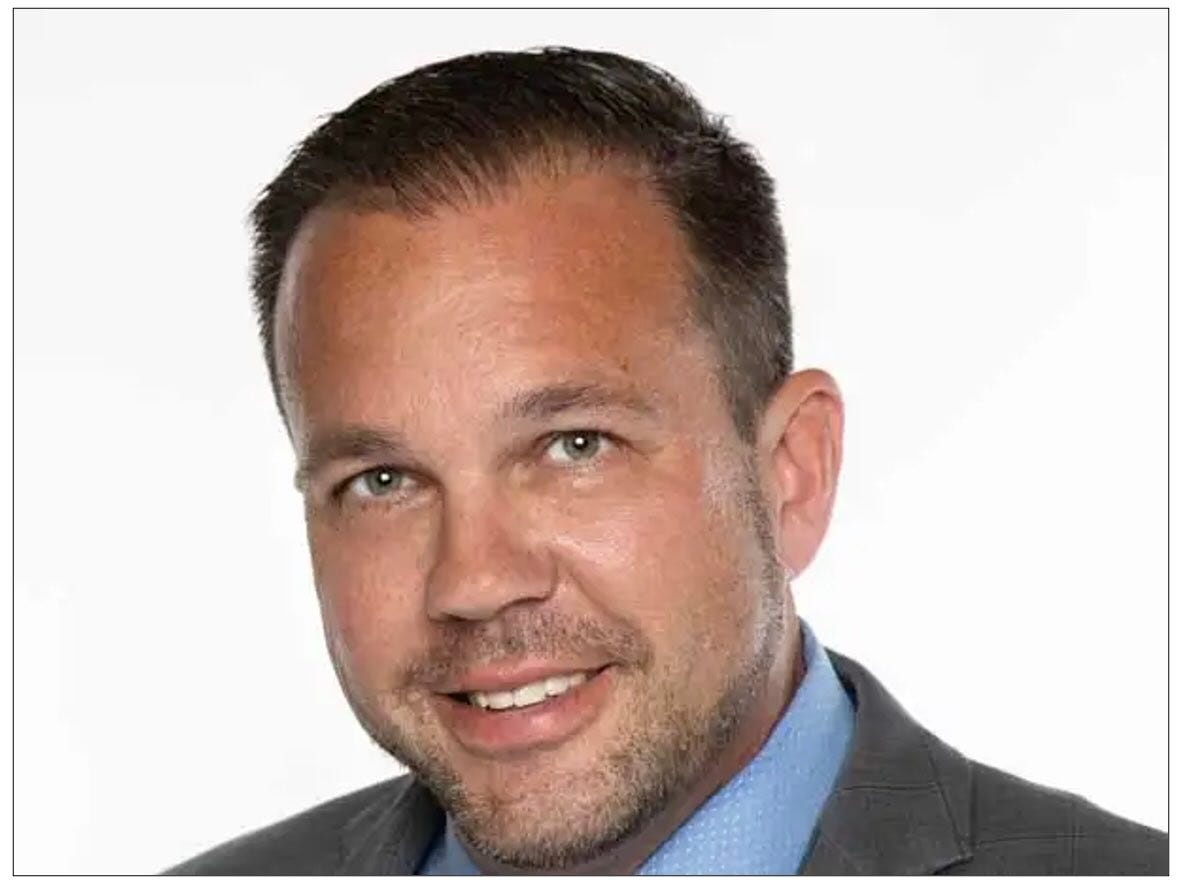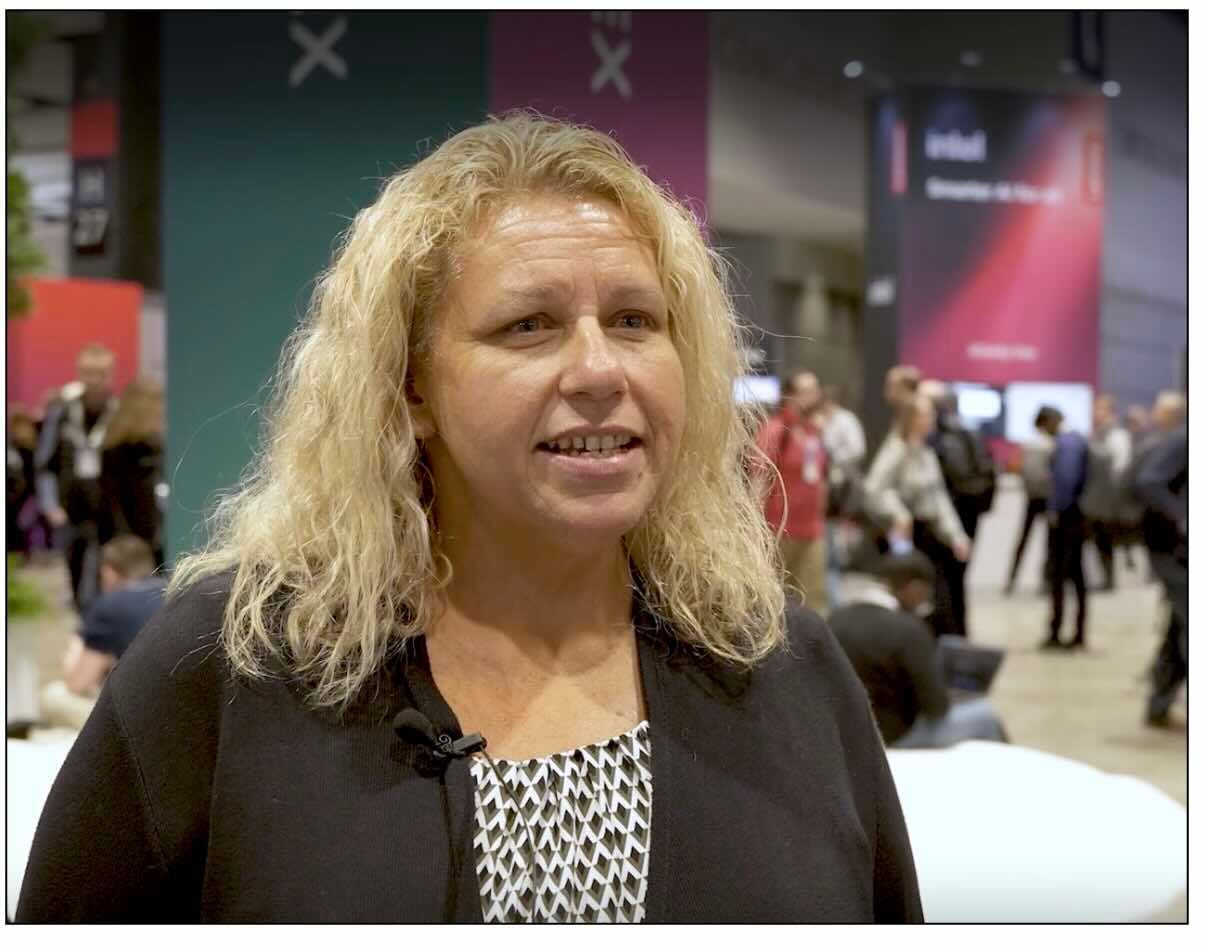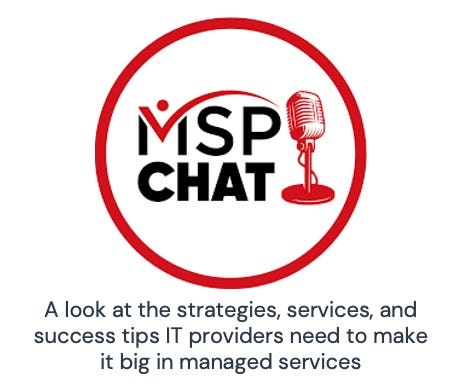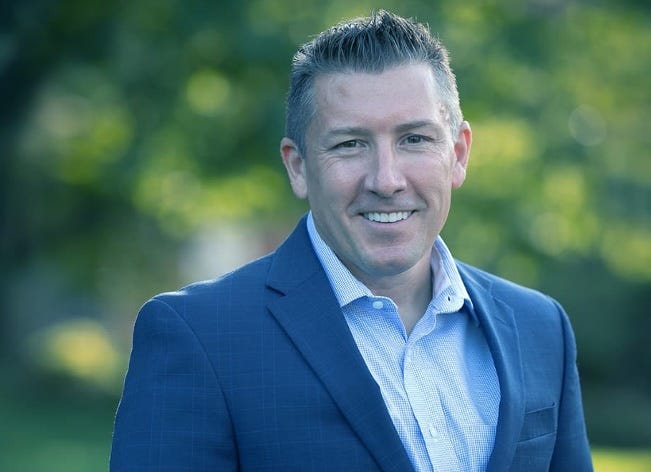ConnectWise Leans In to Special Alliance Partners and (Maybe) Out of Running a Marketplace
Per CEO Manny Rivelo, moreover, something agentic is coming next month. Plus: why that famous MIT survey is flawed, Channel Program’s newest product, and MSP Tim Guim speaks for himself.
As careful Channelholic readers are aware, I recently got a tip about impending layoffs at ConnectWise. Like, a lot of layoffs and possibly in conjunction with some kind of major change to the ConnectWise Marketplace. It was a surprising enough prospect, and from credible enough sources, that I wrote a little about it two weeks ago even though it was closer to a rumor than something I knew for sure.
You know who else was surprised by that prospect? ConnectWise CEO Manny Rivelo, who reached out after reading my post to politely but firmly put the matter to rest.
“We have no plans on laying off people whatsoever,” he says.
I mean, yes, there have been layoffs here and there, as there have been across the industry and as there are all the time at a company the size of ConnectWise. But nothing substantial, according to Rivelo.
“Anything we’ve done has been small efficiency gains and a tiny impact, and those resources have been redeployed if there’s a good home for them,” he says.
And what about the marketplace? Anything coming there?
“There’s nothing in the works,” Rivelo (pictured above) says.
Or to be precise, nothing in the works now. There could be changes coming later. “It’s an area that I think we need to look at,” says Rivelo, whose reasons why will give you a hint about where things might end up going.
For starters, the marketplace scene has changed since ConnectWise got in the game back in 2012. “There’s more players with more marketplaces. There’s more product being consolidated with more distributors,” Rivelo says. And unlike ConnectWise, he adds, those other companies specialize in marketplaces.
“We’re not Amazon. We’re not Pax8,” Rivelo observes. “It’s not our core competency.”
And maybe more trouble than it’s worth for a software company. “A marketplace is not a hugely profitable business,” Rivelo says. “You have to make investments in it and continue to modernize your marketplace.”
Meanwhile, the same channel partners seeking fewer vendor relationships may also want fewer marketplace relationships someday. “I think that’s a logical evolution where businesses would probably over time consolidate to fewer marketplaces that continue to be relevant,” Rivelo says. In which case, he continues, it could make more sense for ConnectWise to leverage those industry-leading marketplaces than to continue operating its own.
“I could see partnerships down the road with a handful or less of true marketplaces where that’s their core competency,” Rivelo says.
Or not. Rivelo has yet to reach a decision about the ConnectWise Marketplace’s future, and isn’t devoting a lot of time to the issue at present.
“It’s just not a priority right now with everything we’re doing,” he says.
So what is a priority for ConnectWise right now?
I wrote a few weeks back about the special integration pact ConnectWise has forged with Proofpoint, as well as its plans to do the same thing with other leading security vendors. I probably should have guessed: that strategy will extend well beyond security.
“We’re going to go deeper and continue to go deeper in the curation of ISVs and integration with our technology stack,” Rivelo says. “We will pick market-leading solutions—let’s say, ‘Magic Quadrant,’ for lack of a better term—across different categories and try to bring those to the MSP in an MSP-centric model.”
The goal, he continues, is to build a platform that combines ConnectWise software wherever the company is strong with third-party software wherever it isn’t, on one invoice with a single price. “We’re trying to take the best of breed and bring it down to an MSP in a way that they can consume it without all the bespoke complexity,” Rivelo says.
It’s trying as well to weave those best-of-breed solutions together so tightly with its own that the resulting platform performs as if it came from one supplier. Say Proofpoint detects a phishing attack, for example.
“We have a security dashboard which provides not only email in it but EDR and a whole bunch of other security services,” Rivelo says. “We want to be able to see information flow back and forth, potentially requesting that email be quarantined or something, and then that information goes back to Proofpoint.”
That kind of thing requires an extra level of coordination and investment both with Proofpoint and other strategic vendors like it.
“We’re requesting APIs from them and providing them as well,” Rivelo says.
Importantly, these are deeper, more sophisticated APIs rather than the kind ConnectWise has long used to exchange data with partners—though not exclusive ones.
“The APIs will be open so that others can do the integration,” Rivelo says. Unless you’re one of the chosen few strategic vendors, though, you’ll be handling that integration on your own.
“We can’t do everybody,” Rivelo says.
So who will it do? Rivelo won’t tell.
“There’s many of them that we’re working on, some that you would know already like a Proofpoint and others that will probably be a little bit of a surprise that we haven’t done things with in the past,” he says.
Specific timing is TBD, but we’ll be learning who they are pretty regularly in the coming year. “I would argue that every 90 days you should be seeing stuff,” Rivelo says.
Two final items about ConnectWise before we move on
1. Despite those special vendor relationships, the expansive ConnectWise ecosystem isn’t going away. There will just be unofficial yet meaningful tiers within it. Think of the resulting picture as akin to what N-able has been doing since early last year when it introduced an advanced API that anyone can use but that a chosen few benefit from more than others.
2. There’s something agentic coming soon. As in during ConnectWise’s IT Nation Connect event about a month from now, and whatever it is will automate not just tasks but entire workflows. “Because if you could make AI do the whole workflow, that’s massively transformative. Then you have infinite capacity at the speed of compute,” says Rivelo, who won’t say much more for now.
“We have live implementations that we’re testing internally. Give us four weeks, and we’ll show you.”
Tim Guim speaks, at last, on MCP
Have I been stalking Tim Guim or has he been stalking me?
Honestly, it’s a little hard to tell at this point. He first arrived on my radar in July, when Elliott Hyman, CEO of MSP rollup Lyra Technology Group, told me how Guim, CEO of Lyra member PCH Technologies, was using MCP, Anthropic’s Claude chatbot, and his RMM tool in ways that had interesting implications for the future of managed services software.
Days later, I found myself discussing the MCP interface that data protection vendor Slide now offers its partners with Carlson Choi, the company’s head of GTM and operations, only to learn that Guim was one of the earliest adopters.
And mere days after that I found myself in the expo hall at a conference in N.J., saw someone I know speaking with someone I didn’t know, and quickly discovered that the someone I didn’t know was … Tim Guim.
We spoke briefly, but I didn’t get a chance to explore his thoughts on MCP at length until the MSP Summit in Orlando last month, and I haven’t had a chance to share those thoughts with you until now. Turns out Slide’s MCP server isn’t the only one he’s using. Cork, which you’ve read about here before, has one too. Guim (pictured) expects to see a lot more.
“All the different products will have MCP servers in place in the future, and then we could have hopefully one interface that we could talk to these different products with,” he says.
Wait, one interface for many products from multiple vendors? You mean MCP could bring the much discussed, never fully realized “single pane of glass” to life?
“It could,” Guim says.
It’s worth emphasizing, though, that as intrigued and enthusiastic as he is about MCP, Guim is progressing toward using it in production cautiously.
“Everything we’re doing right now at MCP is in a sandbox environment,” he says. “We need to be sure that this is going to work.”
And work both consistently and securely, he adds. “We’re SOC 2 certified,” Guim notes. “We’ve got to vet everything. We have to have the proper training in place.”
And that takes time
That’s the thing about AI, though, in contexts extending way beyond MCP. Doing it properly takes time.
Hence findings in TD SYNNEX’s recently published 2025 Direction of Technology report showing that nearly three years after the launch of ChatGPT ushered in the generative AI era, just 38.9% of IT providers offer one or more AI solutions, even though 75% see AI as critical or very important. It’s also why Tracy Holtz (pictured), TD SYNNEX’s vice president of cloud, estimates that maybe 15% of partners are doing something as simple as reselling Microsoft Copilot at present.
“I would tell you that percentage isn’t really the right indicator, because the conversations we’re having and the skilling and the enablement we’re doing around our partner ecosystem to get them enabled around data and security to then be able to sell Copilot efficiently and be able to have their plan, that’s where the percentage goes incredibly high,” says Holtz during the latest episode of the podcast I co-host. “The pipeline is there. The opportunity is there. It’s a longer term.”
Which is why that same podcast episode features a rant monologue by yours truly about the MIT study so many people have referenced in recent weeks. Set aside for the moment that its much-cited finding that 95% of AI pilots fail is based on just 52 qualitative interviews. The bigger issue is that the study defines success for a project as having a “marked and sustained productivity and/or P&L impact” within six months.
You’re giving pilot deployments six months to produce a substantial, enduring financial impact? By that standard, it’s impressive that 5% of them don’t fail.
Look, I hear the AI hype too. I’m fully aware that we’re quite possibly in the middle of an expanding AI bubble right now, and that the effect on my retirement savings if/when it pops will be unpleasant. Just don’t tell me AI’s a bust because it has yet to move P&Ls.
As long as I’m plugging the podcast…
Why not be more explicit about it? My co-host and I rant about all sorts of things on MSP Chat every week. Check it out here.
Channel Program wins unexpectedly again
I first met Kevin Lancaster late in 2017, when he was running ID Agent, a dark web monitoring vendor that had only just started selling through MSPs that spring. One of the biggest, best surprises for him in those early days was the discovery that subscribers were using his solution not only to protect existing clients but as a sales tool for landing new ones too. Sharing the email password with a prospect that you’d found on the cyber black market turned out to be a nearly perfect way to get contracts signed.
I suspect that Lancaster (pictured), who sold ID Agent to Kaseya in 2019 and is now CEO of Channel Program, has been unusually sensitive to unexpected product-market fit ever since, and that this explains some of the functionality he’s been adding to his newest solution, BetterTracker, this year.
Some back story: In 2023, Channel Program introduced a product called NaviStack that helps MSPs inventory all of the different applications in their tool stack. The tool took off to a degree Lancaster didn’t expect, and today contains some 60,000 individual solution listings.
Then, earlier this year, Channel Program began letting users integrate NaviStack with their bank accounts and credit cards. The idea was to let MSPs see not only what products they were using but what they were paying for those products. The reality was that they uncovered a lot of spending on products users didn’t even know they had, a discovery Lancaster calls an “aha moment.”
“It was like, all right, the SaaS sprawl and the subscription problem are much bigger than anybody thought they were,” he says. Bigger, even, inside Channel Program itself.
“I hate admitting it publicly, but when we first beta-ed it and built it in our environment, I saw a subscription that I thought we had canceled about six months prior. It ended up being $600 a month,” Lancaster says.
The thing about checking and credit card statements, though, is that they cover a whole lot more than software spending, and suddenly all of that was visible too.
“It’s not just what you’re paying to the channel vendors. We’re now able to help these businesses understand everything that they’re spending,” Lancaster says. Which is why Channel Program eventually renamed the new tool BetterTracker. “It’s tracking just about everything,” Lancaster says.
And here’s where Lancaster yet again stumbled across unanticipated product-market fit. There’s nothing to stop an MSP from using BetterTracker not only on themselves but on their customers, and making themselves much more relevant to their clients in the process.
“Most of these MSPs are still talking about backup,” Lancaster says, despite the fact that their customers aren’t listening. “They’re thinking about how do you help me save money? How do you help me become more efficient?” The MSP who answers that question is not only a sticky one but a more competitive one as well.
“Just about every MSP looks and sounds the same, they sell the same,” Lancaster observes. “You’re going in as an advisor versus just an MSP.”
You have even more to advise about now too since the launch last month of 365 Scout, a Channel Program tool that imports data from Microsoft Entra ID to reveal not just what an organization is paying for but all the additional, potentially unauthorized apps their users are logging into every day as well. Once again, Channel Program itself turned out to be an eye-opening early test case.
“I thought we were probably using 30 to 35 different tools,” Lancaster says. The actual count was 69.
Coming soon is AI-based functionality that will recommend optimization measures based on an end user’s usage and spending patterns, as well as integration with usage data from Google. If any of that proves unexpectedly popular, safe to say, Lancaster will be ready.
Also worth noting
ThreatCaptain, Mizo, and Strategy Overview are the three finalists in this year’s ConnectWise PitchIT program. If my flight gets me to IT Nation Connect in time, I’ll be there in the audience to see the winner crowned.
Insight and IronEdge Group are the two latest IT service providers to get serious about AI services. How serious are you?
Lots of cool-looking hardware in HP’s latest release wave, but the 14” mobile display and distinctly immobile 49” one are the two items that most caught my eye.
Cisco has brought agentic AI to its videoconferencing solution portfolio.
Given that its MDR service is an all-time best seller, should we really be surprised that Sophos offers penetration testing and application security services now too?
Check Point and Wiz (which means by extension, Google) are teaming up on network and cloud security.
Data Intelligence for Cybersecurity, from Databricks, is designed to combat AI-driven threats with real-time, AI-enabled threat intelligence and security data integration.
According to Exabeam, the new peer benchmarking in its Nova platform lets CISOs proactively compare, measure, and improve their organization’s security posture.
Enhancements in the new edition of SailPoint’s Identity Security Cloud include non-employee risk management and machine identity security functionality.
The browser extension Cato Networks has added to its SASE Cloud Platform aims to enable zero trust network access for unmanaged, BYOD, and contractor devices.
It’s Cybersecurity Awareness Month, so ESET has released a new and improved version of its free security awareness training course.
Also in honor of Cybersecurity Awareness Month, Action1’s doubling its endpoint coverage for all customers and free tier users worldwide.
That AI usage by businesses is up 270% this year, according to HackerOne, might just be why prompt injection reports are up a precisely 2x 540%.
Numbers like that shed light on why 84% of IT and security professionals are “uncomfortably stressed at work,” according to Object First.
No surprise to those of us who’ve spent time with him: David Jordan has been promoted to EVP and CFO of TD SYNNEX.
Dan Zaniewski is the new CTO at Auvik Networks.
Tom Gavin is the new chief marketing and communications officer at Pax8.
Amjad Hussain is the new chief resilience officer at Pax8 partner CrowdStrike.
Zyxel Networks has launched four new Wi-Fi 7 access points designed to provide affordable, cloud-managed, next-generation wireless connectivity to SMBs.



